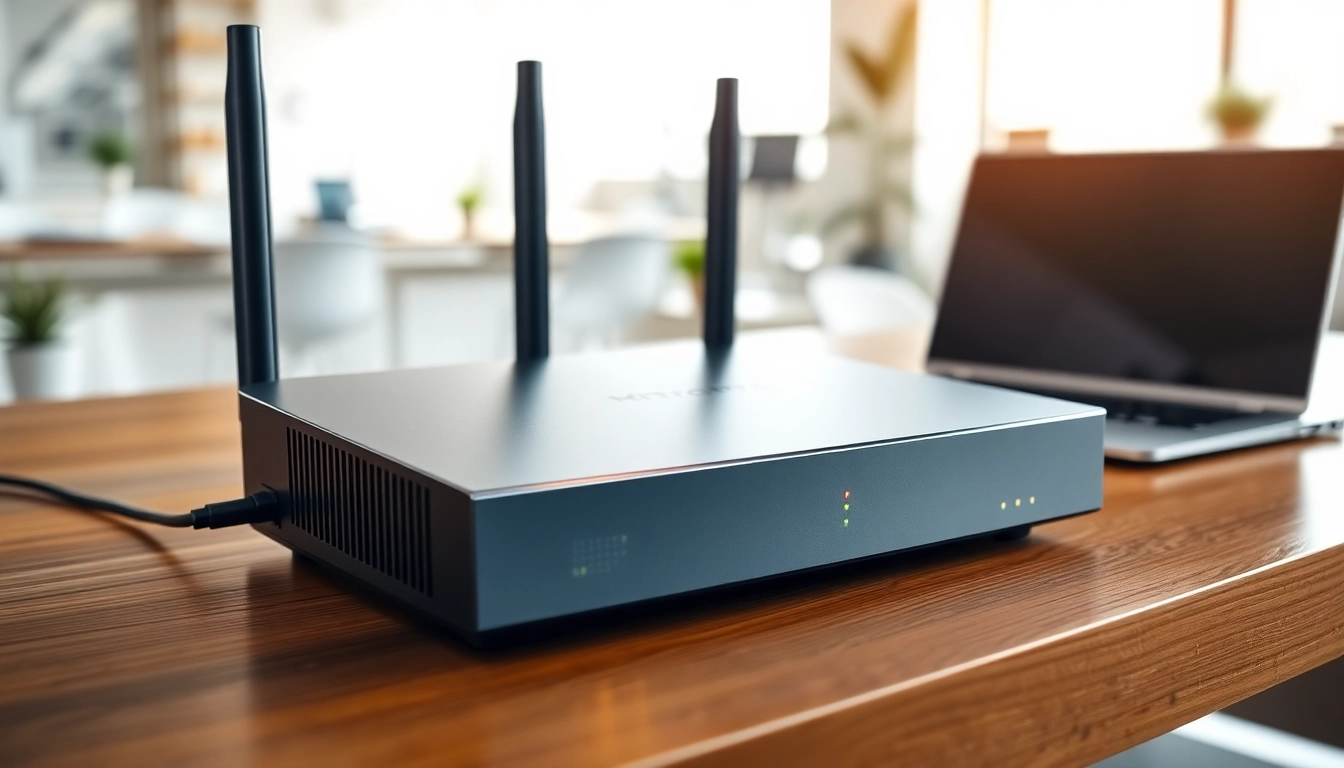Introduction to Mikrotik Networking Solutions
Mikrotik is a Latvian network equipment manufacturing company known for its innovative approach to network solutions. As a leader in the field, it provides a diverse range of products, including wired and wireless network routers, network switches, and access points. Founded in 1996, Mikrotik aims to empower users with powerful networking tools that not only meet but exceed their expectations. With its growth and the sheer quality of its devices, Mikrotik has become a go-to solution for network professionals worldwide. Many users find that diving into the functionalities and intricacies of Mikrotik devices can significantly enhance their networking capabilities. For further information, you can explore more about Mikrotik and its product offerings.
What is Mikrotik?
Mikrotik specializes in the production of networking hardware and software that caters to a variety of environments, ranging from small home offices to large-scale data centers. The company’s primary goal is to simplify networking through its robust and user-friendly solutions. Mikrotik develops and sells not only hardware devices but also the RouterOS operating system that powers most of its routers, providing users flexibility and control over their networks.
History and Evolution of Mikrotik
Founded in 1996 by Arnis Riekstins and John Tully, Mikrotik started as a software development company. It quickly progressed to hardware production, bridging the gap in the market for reliable yet affordable networking solutions. Over the years, Mikrotik has continuously evolved, introducing cutting-edge technology that supports advanced features such as VPN, advanced routing protocols, and system monitoring tools. This evolution is propelled by feedback from its vast user community, which has helped shape the direction of future developments.
Mikrotik’s Unique Features
Mikrotik products are characterized by their high performance, adaptability, and extensive configuration options. Key features include:
- RouterOS: The core operating system that drives Mikrotik’s devices enables users to configure and customize settings to their specific networking needs.
- Extensive Protocol Support: Mikrotik supports a wide variety of protocols, including BGP, OSPF, and MPLS, making it suitable for complex network setups.
- Scalability: Whether for a small office or a large ISP network, Mikrotik devices can scale seamlessly to accommodate growing demands.
- Cost-Effective Solutions: Mikrotik’s pricing strategy ensures that even small businesses can access high-quality networking solutions without a hefty investment.
- Community and Resource Availability: Mikrotik has fostered a vibrant user community, providing ample resources for troubleshooting and education.
Types of Mikrotik Devices
Mikrotik Routers
The backbone of Mikrotik’s product line is its routers, designed to meet various networking demands. From entry-level routers suitable for home usage to high-capacity routers for ISPs, Mikrotik offers a variety of models suited for different applications. Many of these routers come equipped with advanced features like bandwidth management, firewall controls, and VPN support, making them versatile for various uses.
Mikrotik Switches
Mikrotik switches are built to enhance network performance by providing high-speed connectivity while managing traffic load effectively. They offer features such as Layer 2 and Layer 3 switching capabilities, VLAN support, and link aggregation. These attributes make Mikrotik switches ideal for both small and large network infrastructures.
Mikrotik Wireless Access Points
In an increasingly mobile world, Mikrotik wireless access points provide flexibility and ease for connecting multiple devices to a network. These access points offer robust wireless performance, including support for advanced wireless standards and multiple frequency bands. Additionally, they integrate seamlessly with Mikrotik’s routers, allowing for centralized management and enhanced security features.
Setting Up Your Mikrotik Device
Initial Configuration Steps
Setting up a Mikrotik device involves several steps to ensure optimal performance. First, users can connect to the device via Winbox, a Windows application that simplifies configuration. Connecting via IP or MAC address makes initial setup straightforward. Users should configure network interfaces, set up DHCP if required, and adjust firewall rules. The steps include:
- Connecting to the Router using Winbox or web interface.
- Accessing the Quick Set menu for basic configurations.
- Setting up IP addresses and DHCP options as necessary.
- Configuring firewall rules to secure the network.
- Applying additional settings/protocols such as NAT as required.
Utilizing RouterOS
RouterOS is central to the operation of Mikrotik devices and allows for extensive customization of network settings. Users can access advanced features like static routing, PPPOE server setup, and dynamic DNS among many others. For those looking to make the most of RouterOS, understanding the terminal command line interface (CLI) can provide more control and options at their disposal. Users can create scripts to automate common tasks, monitor network traffic, and gather performance reports.
Best Practices for Security
Security should always be a top priority in network configuration. Mikrotik devices come with a range of features that help users secure their networks, but these features must be utilized correctly. Best practices include:
- Changing Default Passwords: The first step in maintaining security; never use default passwords.
- Implementing Firewall Rules: Customize firewall settings to limit access to only necessary services.
- Regular Software Updates: Keeping RouterOS up to date ensures that known vulnerabilities are patched.
- Using VPNs: For remote access, using a VPN provides an encrypted channel that enhances security.
- Monitoring Access Logs: Regular checks on logs can help catch and prevent unauthorized access.
Performance Metrics of Mikrotik Devices
Evaluating Speed and Efficiency
Performance evaluation is crucial when considering network equipment. Mikrotik devices are designed for high throughput and low latency. Speed can be tested using tools included in RouterOS, such as bandwidth test servers and IP traffic monitoring. Regular testing helps analyze overall network efficiency and pinpoints potential bottlenecks, ensuring that the network operates at peak efficiency.
Comparing Network Load Handling
Mikrotik devices have undergone rigorous testing to assess their ability to handle various network loads. Factors such as simultaneous connections, data throughput, and response times are critical. Users can utilize various tools within RouterOS to simulate loads and analyze responses. Understanding how a device responds under stress helps users ascertain its suitability for their specific needs.
Monitoring and Management Tools
Ongoing management and monitoring of networks can significantly influence performance. Mikrotik offers several tools within RouterOS for this purpose. Features such as Dude, a network monitoring application, help in managing devices within the network. Other tools include traffic flow, queue trees for bandwidth management, and logging features for real-time insights, which empower users to maintain control over their networking environment.
Support and Community for Mikrotik Users
Online Resources and Forums
The Mikrotik community is rich with resources, including forums, documentation, and user-contributed knowledge bases. Official documentation provides comprehensive guidelines on setup and troubleshooting. Additionally, dedicated forums are available for users to share experiences, ask questions, and exchange tips. Such vibrant interactions foster a supportive learning environment for both beginners and experts alike.
Learning from the Community
Communicating with other users can provide invaluable insights into the practical uses of Mikrotik products. Many community members share scripts, configurations, and case studies that highlight successful projects and common pitfalls. Participation in discussions can often lead to novel solutions and best practices that are not covered in formal documentation.
Professional Certifications and Training
For those interested in advancing their careers, Mikrotik offers a range of certification programs. These certifications validate users’ expertise and knowledge of Mikrotik devices and RouterOS. Training options vary, from basic courses focusing on router setup to advanced networking concepts. The Mikrotik Certified Network Associate and Mikrotik Certified Wireless Engineer programs are popular among professionals looking to gain formal recognition of their skills.

